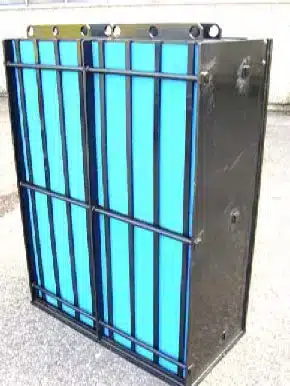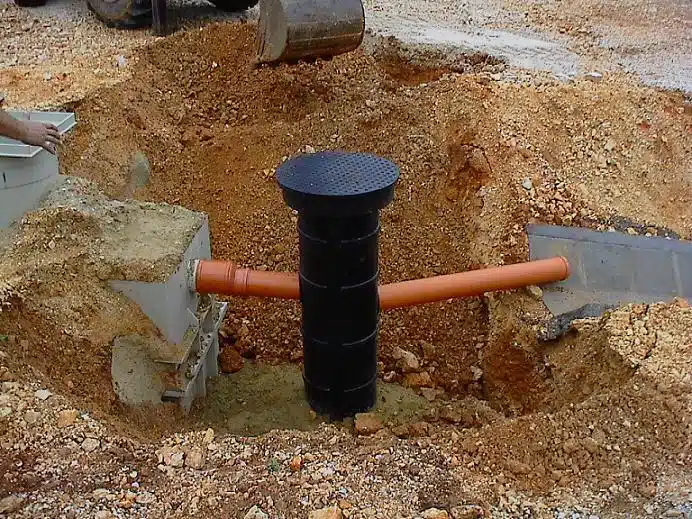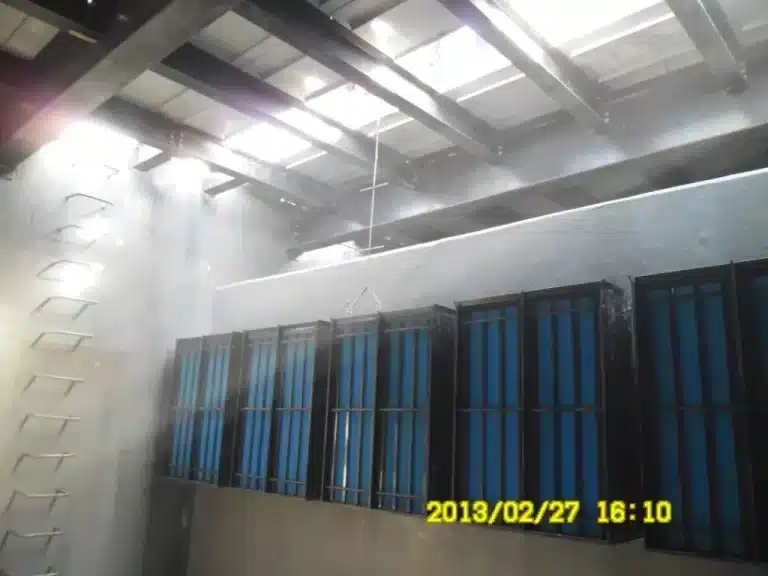Do you know about the hidden heroes under Virginia’s soil? These underground oil-water separators are key to keeping our water clean. They help businesses across the state follow strict environmental rules.
Freytech Inc. is a leader in providing top-notch Virginia Below Ground Oil Water Separators. Their technology beats North American limits, offering 5 PPM separation efficiency. This is vital for companies handling motor oil, diesel, gasoline, and jet fuel.
Freytech’s separators can even remove trace amounts of emulsified oil, reaching 0.1 PPM efficiency. This precision is key for keeping Virginia’s environment safe and meeting laws.
Key Takeaways
- Virginia Below Ground Oil Water Separators exceed industry standards
- Freytech Inc. offers 5 PPM separation efficiency
- Underground systems effectively manage stormwater and wastewater
- Enhanced coalescing technology separates various hydrocarbon types
- Compliance with environmental regulations is ensured
- Expert installation and support available from Freytech Inc.
Introduction to Below Ground Oil Water Separators in Virginia
Businesses in Virginia struggle with oil-contaminated water. Below Ground Oil Water Separators are key in solving this problem. They protect the environment and follow state laws.
What are Below Ground Oil Water Separators?
These devices are made to take oil and grease out of wastewater. They let oil rise to the top while water goes down. This is very important for many Virginia businesses, like car washes and factories.
Importance of Oil-Water Separation in Virginia
Virginia has many water bodies that need protection. Oil interceptors and grease traps keep harmful stuff out. They keep water safe for animals and people, which is good for the environment.
Regulatory Compliance and Environmental Benefits
Virginia has tough environmental laws for businesses. Using the right oil-water separation systems helps companies follow these laws. These devices also have big environmental benefits. They cut down on pollution, protect fish, and make waterways cleaner. Adding stormwater treatment devices with them filters out more pollutants.
Types and Applications of Underground Oil-Water Separator Systems
Underground oil-water separator systems are key in managing stormwater in Virginia. They come in different types and materials, each suited for certain uses.
Steel vs. Fiberglass Underground Tanks
There are two main types of underground tanks: steel and fiberglass. Steel tanks are strong and durable. Fiberglass tanks don’t corrode easily. The choice depends on the soil and the project’s needs.
Emergency Generator Fuel Oil Systems
Emergency generator fuel oil systems use underground separators to keep fuel clean. This ensures generators work well during power cuts, keeping important operations going.
Petroleum Dispensing and Waste Oil Systems
Petroleum dispensing places and waste oil systems use these separators to handle spills. They clean contaminated water before getting rid of it. This helps keep Virginia’s environment safe.
These systems meet many needs across industries. They protect water and follow environmental laws. Choosing and setting them up right is key for them to work well and last long.
Virginia Below Ground Oil Water Separators: Features and Benefits
Virginia Below Ground Oil Water Separators are key for keeping our environment clean. They are great at separating oil from water, protecting our water sources. The technology used in these separators works very well.
These separators have amazing features. They can remove up to 99.9% of oil from waste streams. This is way above the limits set in North America, making them a trusted choice for Virginia businesses.
Using these systems has big benefits. They keep businesses in Virginia in line with environmental laws. By keeping oil and water apart, they stop pollutants from getting into our water.
These separators also have extra features that make them better. Things like automatic tank gauge systems, overfill prevention valves, and custom warning signs are included. These features make the separators safer and easier to use, making them a smart choice for businesses that care about the environment.
Installation and Maintenance of Below Ground Oil Water Separators
Setting up and taking care of below ground oil water separators is crucial for managing stormwater in Virginia. These systems are essential for treating wastewater and following environmental laws.
Site Preparation and Installation Process
First, experts check the site and get the needed permits. The area must have good drainage. Concrete anchors and straps hold the unit down. A professional team makes sure it works well right away.
Regular Maintenance and Inspection Requirements
Keeping up with regular maintenance is key for the best performance. This means cleaning the separator, looking for leaks, and changing filters. Regular checks help spot problems early, avoiding big repair costs. A well-kept system helps manage stormwater well.
Troubleshooting Common Issues
Even with good care, problems can happen. Issues like clogging, less efficiency, and equipment failure are common. Quick action is needed when these happen. Skilled technicians can find and fix problems, keeping your equipment running right.
Experts offer help with installing, maintaining, and fixing your system. They make sure it meets environmental laws. With the right care, below ground oil water separators are a key part of managing water.
These separators are crucial in storm water systems. They process runoff to meet the US EPA’s Clean Water Act standards. With effective oily water treatment, facilities protect the environment and dodge big fines.
Conclusion
Virginia Below Ground Oil Water Separators are key to managing stormwater and protecting the environment. They are great at keeping oil and water apart. This helps businesses meet tough rules and lowers their environmental impact.
It’s important to pick the right wastewater treatment gear for lasting success. Virginia companies need dependable and effective solutions for their oil-water separation needs. Modern separators use advanced technology for better performance, making them a wise choice for companies aiming to improve their environmental efforts.
Ultimately, Virginia Below Ground Oil Water Separators do more than follow rules. They show a company’s commitment to being green and caring for the planet. By using these systems, businesses can safeguard local ecosystems, boost their efficiency, and show they care about a cleaner, greener Virginia.










